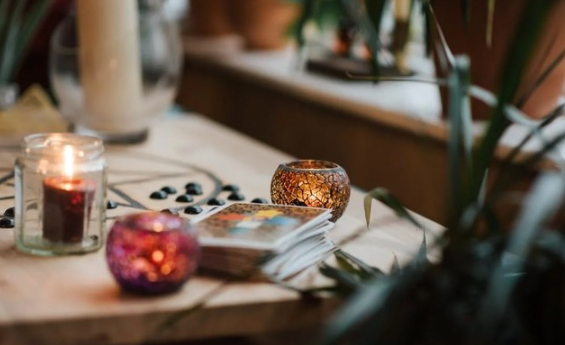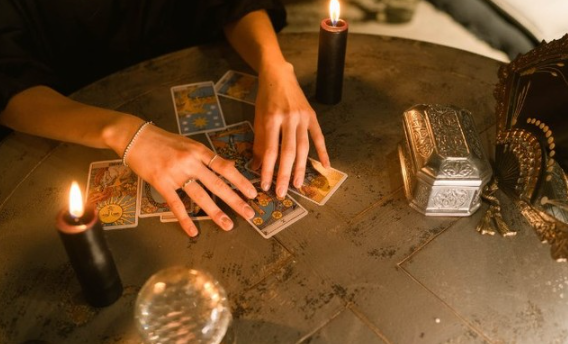Reconnect with the Tarot: An Ancient Tool for Self-Knowledge.

The Tarot, a millennial practice that has endured through the centuries, is much more than just a method of divination. At its core, it is a profound tool for introspection and self-discovery. The Tarot cards not only provide answers to the questions we ask but also invite us to explore unknown aspects of our personality and inner life. With over 500 years of history, this symbolic system has earned its reputation as a path to inner wisdom.
The most famous Tarot deck, the Tarot of Marseille, is known for its structure of 78 cards and rich symbolism. Although there are theories connecting the Tarot to ancient cultures such as the Egyptian and to Kabbalah, the truth is that its influence has spread throughout Europe, particularly in countries like Spain and France. In this article, we will explore what makes Tarot so special, how to use it effectively, and the profound meanings we can extract from it.
Preparation: Key to a Successful Reading
One of the most important aspects before performing a Tarot reading is the preparation of the environment. For the reading to be successful, it is crucial to create an appropriate setting. A quiet space, free of interruptions and external noises, is essential to facilitate concentration for both the tarot reader and the querent. It is recommended to place a cloth on the table so that the cards slide smoothly, creating a ceremonial atmosphere that adds solemnity to the moment.
The tarot reader plays a vital role in the success of the reading. Not only should they be someone with deep knowledge of the cards, but also an intuitive person, capable of generating a climate of trust with the querent. If this connection is not achieved, the reading may not offer the clarity expected. Therefore, before starting, ensure that the tarot reader is someone you feel comfortable with and trust..

The Power of Questions
While many people turn to Tarot in search of concrete answers, a good Tarot reading focuses as much on the questions as on the answers. Tarot is not designed to give definitive solutions but to guide the person towards a deeper understanding of themselves and their current situation. Often, the questions that arise during the reading are more revealing than the answers themselves, as they open doors to aspects of our lives we had not considered before.
At its core, Tarot is a tool for uncovering hidden potentials. It invites us to reflect on which parts of our lives need more attention and where we can focus our energy to achieve the best results. Beyond its divinatory aspect, Tarot is a guide that helps us connect with our inner wisdom.
The Arcana and Their Mysteries
Each Tarot card contains a deep symbolic meaning. The major arcana, in particular, are 22 cards filled with symbolism and archetypal messages that represent different aspects of the human experience. When performing a reading with these cards, we should not rush to interpret them quickly. Each one opens doors to the unconscious and continues to exert its influence even after the session has ended.
The major arcana are known for their ability to point out crucial moments in life, while the minor arcana focus on more everyday aspects. Together, these cards form a coherent narrative that offers a holistic view of the querent's situation. For those seeking quick answers, a simple three-card spread is ideal, but for more complex questions, more elaborate spreads with five or more cards can be used.
Numerology and Symbolism in Tarot
One of the key elements of Tarot is numerology. The numbers that appear on the cards are not just a way to organize them, but they carry deep meanings. These numbers combine with the archetypes of the cards to offer a richer and more nuanced interpretation of the situation. For example, the number 1 is associated with new beginnings, while the number 10 indicates the culmination of a cycle.
Additionally, Tarot uses four suits, each representing a different aspect of life: cups symbolize emotions, wands represent work, swords relate to intellect, and pentacles reflect the material world and money. Understanding these associations is crucial to making an accurate and profound interpretation of the spread.

The Language of Colors in Tarot
The language of colors in Tarot is a powerful tool that goes beyond the interpretation of the arcana themselves. Each color carries an energetic vibration that connects with different aspects of our lives, emotions, and mental states. Through colors, the cards send subtle signals that enrich the meaning of each reading, providing a deeper perspective on our circumstances. The colors in Tarot are like a silent language that speaks directly to the subconscious, helping us understand what we often cannot express in words.
For example, the color blue in the cards signifies serenity, introspection, and wisdom, connecting us with the power of inner knowledge and the calm needed to face difficult situations. Red, on the other hand, reflects passion and vital energy, reminding us of the importance of living with intensity and emotion, but also of controlling our passions so as not to be consumed by them. Each color possesses its own symbolism, influenced by its context in the spread, and can change in tone depending on the cards that accompany it.
The use of colors in Tarot is not random; it has deep roots in psychology and alchemy, reflecting the interaction between light and darkness, between the conscious and unconscious aspects of our being. Understanding this chromatic language offers us an additional way to interpret what the cards want to convey, expanding the meaning of each reading. It is a key to unraveling the hidden messages in the arcana and connecting with the more subtle levels of our existence. Thus, Tarot becomes not only a tool for divination but a mirror that reflects our deepest truths through a harmonious play of colors and symbols.
When to Have a Tarot Reading?
The right time for a Tarot reading is when you feel the need for clarity or direction in your life. However, it is important to remember that Tarot will not tell you what to do or solve your problems. Rather, it will offer you insight into yourself and help you make informed decisions. You are the only one responsible for your life, and Tarot simply acts as a guide to help you connect with your own inner power.
The Tarot cards, with their rich and mysterious symbolism, offer us a unique opportunity to explore our inner world and become aware of our strengths and weaknesses. In doing so, we not only gain answers but embark on a journey of self-discovery that can change the way we view our lives and decisions.
Tarot, with its blend of symbolism, numerology, and colors, is much more than a deck of cards. It is a powerful tool that invites us to reflect, explore our subconscious, and make wiser decisions. Ultimately, Tarot reminds us that we are the authors of our own destiny and that, by connecting with our deepest truths, we can live more fully and authentically.
You may be interested too
Connections Each Zodiac Sign Should Leave Behind To Start 2026 With Balance